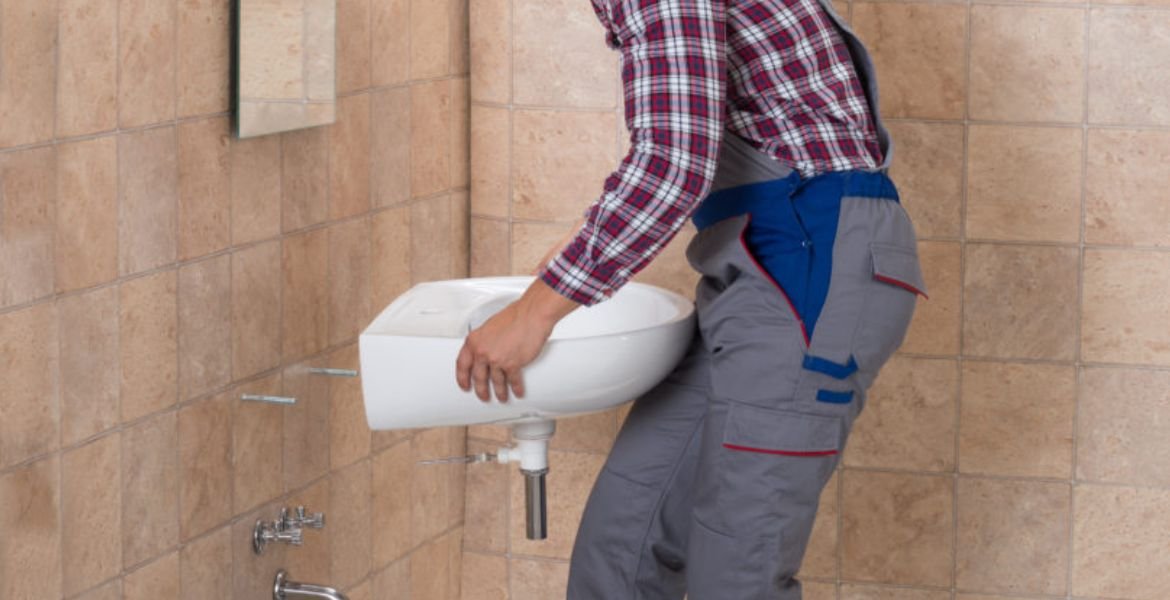
Do you want to add a touch of elegance and functionality to your bathroom? Installing a pedestal sink be an excellent choice. These help save space and add a classic look to your bathroom. The installation process is usually tedious if you choose a DIY. Don’t stress, we have you covered with our ten-step guide.
With our guide, you learn to install a pedestal sink perfectly without any mishappening. The choice of doing a DIY is a fun activity, at a certain step, if you come across a discrepancy, do not hesitate to contact the professionals at work for guidance or support!
10 Step Guide on ‘How to Install a Pedestal Sink’
1. Mount the Wood Blocking
The installation process for pedestal sink starts with a good foundation. A stud finder equipment must be used to locate the studs in the wall. Once you have all the studs located, mark their positions.
Following up with the marking, cut and mount a wooden block between the studs to serve as a sturdy support structure for your basin. Make sure it's level, as this will ensure the basin sits straight and securely.
2. Attach the Mounting Plate
Most of the pedestal sink has a mounting plate that comes with the ease of attaching to the wall. Secure this plate to the wood blocking you've installed in the previous step. Use appropriate wall anchors and screws to ensure it's firmly in place. Be sure to level the mounting plate for a perfectly aligned basin.
3. Install the Faucet
There is generally a requirement to drill holes in the pedestal sink for the faucet and handles. Use a hole saw or a spade bit, and be precise to ensure the faucet sits correctly. The faucet is secured in the space which connects it to the water supply lines.
4. Mount the Sink
The sink must be placed carefully onto the pedestal. Check if it fits right, and if your sink has mounting brackets. Attach and secure brackets to the wall-mounted plate. Make sure everything is level and the sink is in its desired position.
5. Drill Holes for Lag Screws
Later, to secure the pedestal sink to the wall, you'll need to drill holes for lag screws. Locate the holes on the back of the sink and pedestal and mark their positions on the wall. Use a masonry bit to drill holes into the wall and the wooden blocking. Make sure the holes are deep enough to accommodate the lag screws.
6. Connect the Drains
Take the drain pipe and connect it to the button of the sink. Apply the silicone sealant to create a watertight seal. Tighten the nut to secure the drain in place. Ensure the P-trap is correctly positioned and connected to the drainpipe.
7. Connect the Water Pipes
Use the mentioned connectors to connect the water supply to the faucet and secure them tightly. Turn on the water supply briefly to check for any leaks. If there are any leaks, tighten the connections further.
8. Set the Pedestal
The pedestal under the sink must align with the sink's mounting holes. If necessary, adjust the pedestal's height to match the sink's position.
Once aligned, insert the lag screws through the sink and pedestal into the pre-drilled holes in the wall. Tighten the screws securely to firmly attach the sink and pedestal to the wall.
9. Fix Lag Screws
Double-check that all lag screws are tightened securely. You want to ensure that your pedestal sink is stable and won't wobble or come loose over time.
10. Check for Leaks
For the final step, let’s turn on the water supply to the faucet and check for any leaks around the faucet connections and the drain. Make any necessary adjustments to stop any leaks immediately.
Conclusion
Installing a pedestal sink may seem like a challenging task, but by following these steps carefully and being patient, you achieve a beautifully installed basin that adds charm and functionality to your bathroom. With a little time and effort, you enjoy the benefits of your newly installed pedestal sink for years to come.






